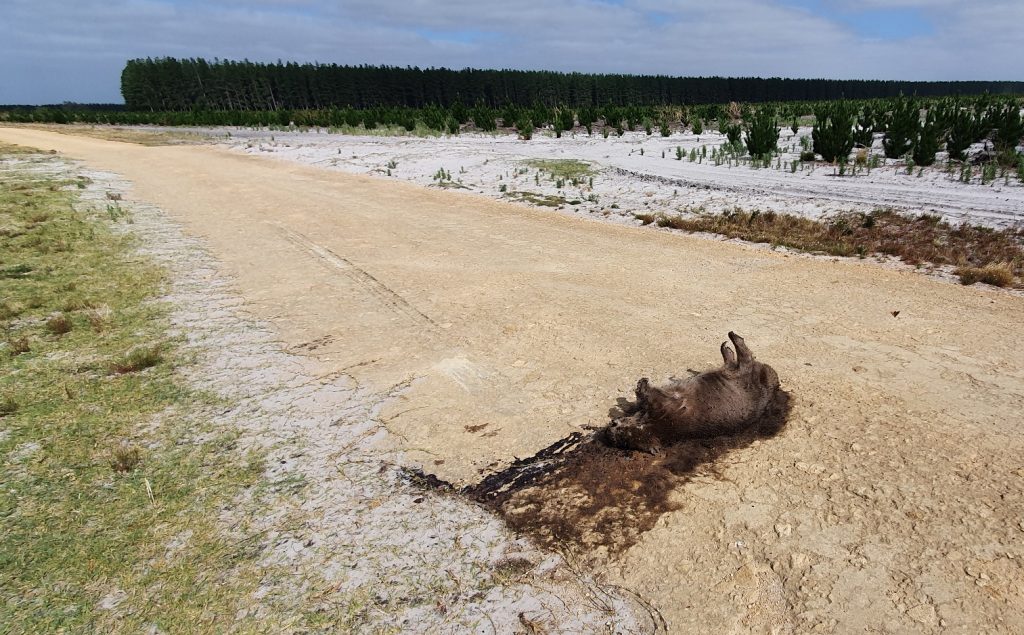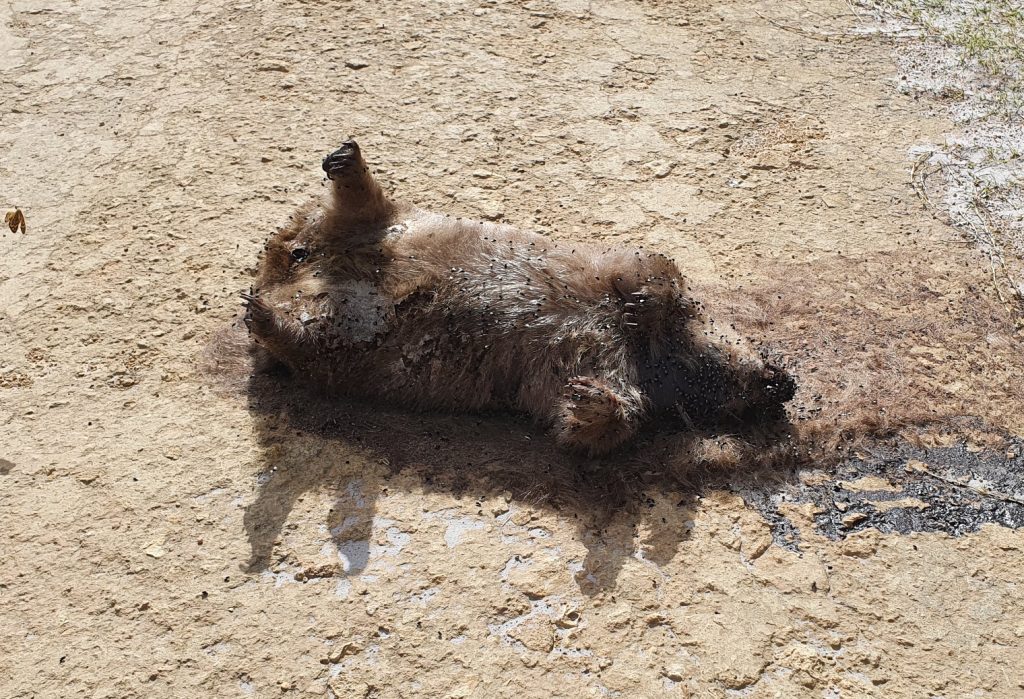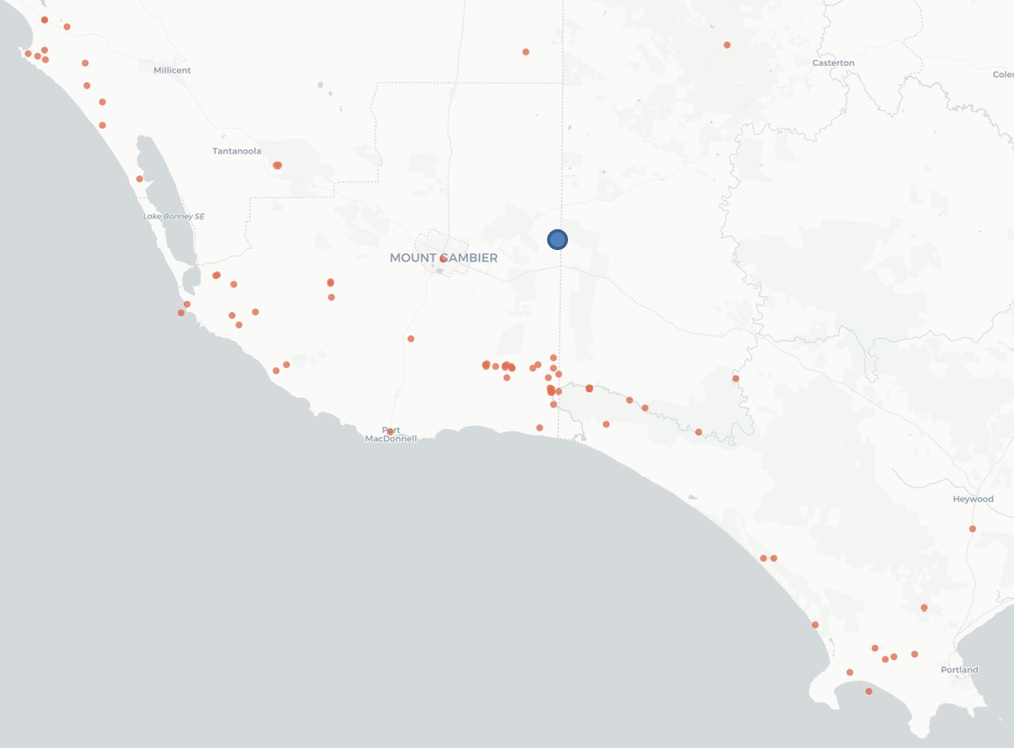An uncommon sighting of a Common Wombat…
Before I start, a quick warning – if you are squeamish about looking at dead wildlife on our roads – then this post is not for you!
The other day I came across and interesting sighting in pine forest on the track that runs along the old Mt Gambier to Heywood disused railway line, right near the SA/Victoria state border.

Despite being only a few hundred metres from the state border, and unlike the rest of us in the human population at the moment, no cross-border permits or approvals are needed for this critter to wander through the landscape! And while it is unfortunate that this wombat was apparently struck by a car (see skid marks above), roadkill is actually a really important means by which the distribution of many of species can be verified and refined over time. Yes, every cloud has a silver lining…

In this case, it might be ‘common’ by name but this species is not so commonly distributed across much of its former range in southern Australia, and hence this is not somewhere I expected to see a Common Wombat (Vombatus urisinus). I have driven through this forest many hundreds of times over the past 20 years and never seen a wombat anywhere near here. The nearest records and previously known populations are 15-20 km away, in the Caroline forest area near Donovans (west of where the Glenelg River crosses the border).

So now we get to ponder questions like: is this a vagrant individual that has gone for a long walk, is there a new satellite population forming or is it a remnant population hanging on in this new location? In fact, these important questions could one day be answered by future genetic analysis of any material kept and stored from this animal.
If you regularly travel through parts of the landscape and notice something out of the ordinary by the side of the road, please don’t ignore it. At the very least, some nice clear photos with date and location data is a great start, and if it is small enough and fresh, then bagging it up and freezing it is a great and very simple way of contributing to science and our understanding of a species’ status and how their distribution may be changing over time.
Whichever method you employ, you are welcome to contact us at NGT if you find anything interesting (and we’ll either assist or point you in the right direction), or simply make direct contact with your state Museum (for physical specimens) or Environment Department (for photographic records) to make sure that this data is recorded and can be put to good use in the future (see this old NGT newsletter article for an example of how roadkill information can aid our ecological understanding).
Which means my advice from here is simple…! During your travels, keep your eyes peeled!
